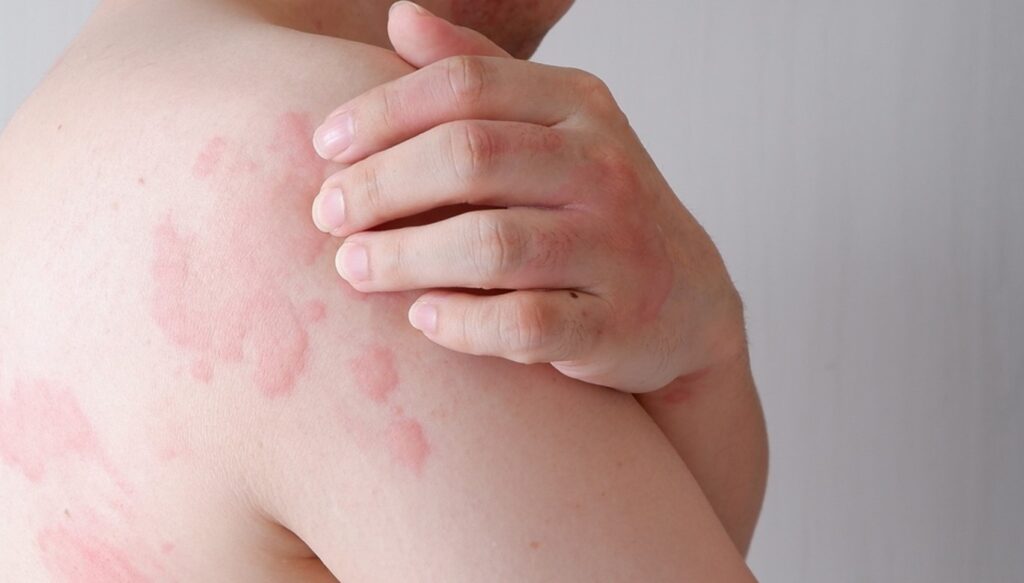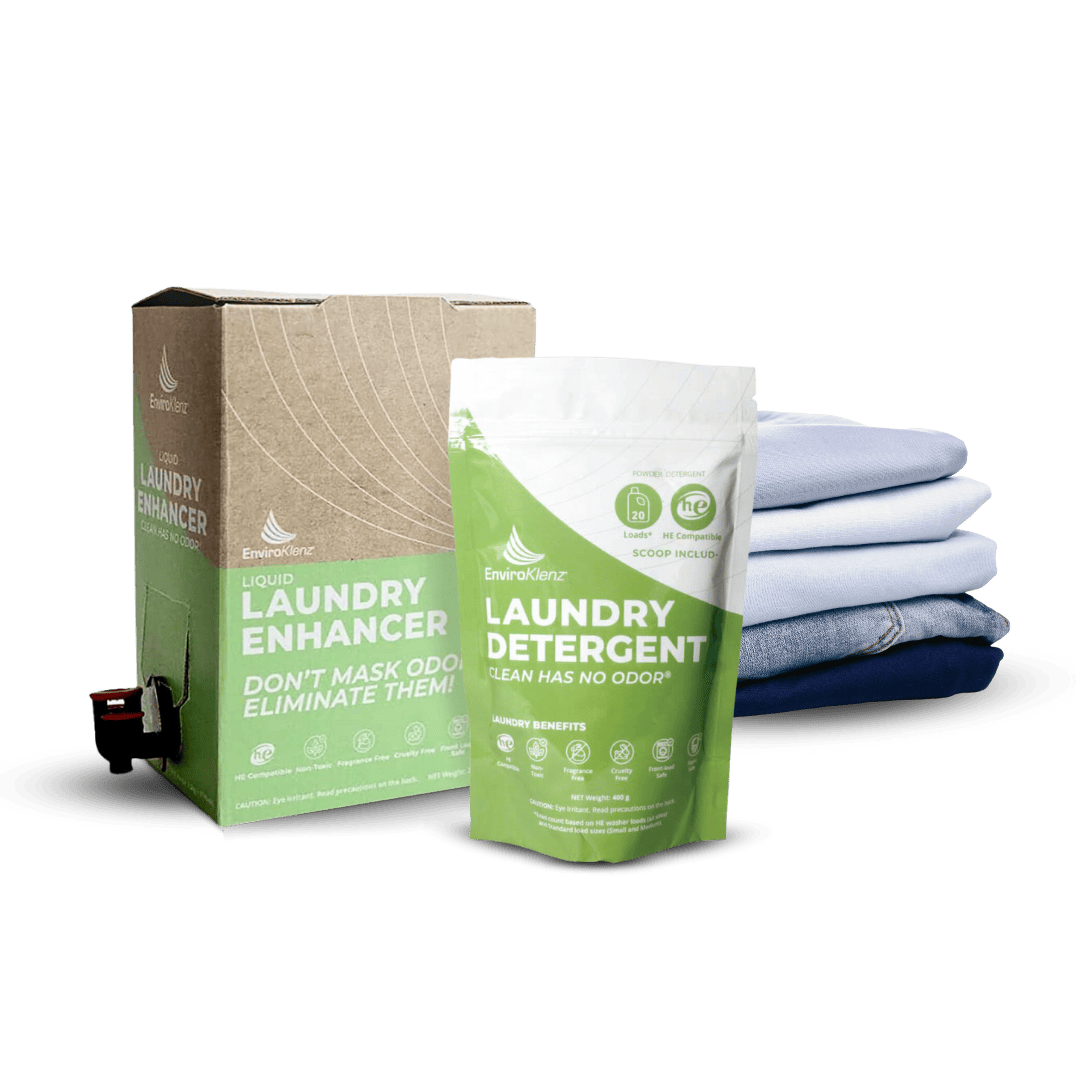Cleaning clothes will be next to impossible without laundry detergents. Still, many laundry detergents contain toxic substances that can potentially cause skin irritation, even long after washing clothes.
Most standard laundry detergents are made with some of the most unsafe ingredients, from preservatives to synthetic fragrances, dyes, and other harsh chemicals. These substances can cause rashes or hives in both adults and children but can be more prevalent in people with pre-existing skin conditions or allergies.
If you have hives or a laundry detergent rash, this article explains the safest way to wash clothes so you don’t trigger allergic reactions.
Symptoms of Laundry Detergent Allergies
Laundry detergent allergies vary between individuals and may present different symptoms in the same person over time. Some people may experience symptoms right after wearing (or even touching) freshly washed clothes, while others may have reactions several hours later.
Generally, you will notice any of these symptoms if you are allergic to one or more substances in your laundry detergent:
- Red skin
- Rash or hives that usually feels tender
- Moist blisters that may ooze
- Scaly patches on the skin with severe itching
- Sensitivity to sunlight
- Cracking, scaly, or dry skin
- Irritation or swelling in the affected area
Typically, developing an allergy to offending substances in laundry detergents happens slowly, usually after repeated exposures. However, after the allergy develops, even the briefest exposure can trigger a reaction.
Identifying Laundry Detergent Allergies
Identifying washing detergent hives can be tricky, considering they present similar symptoms to other skin problems.
Here are a few clues to help you determine whether something in your laundry detergent is causing your skin rash.
- If you notice a sudden skin rash or skin irritation on parts of your body after a recent change in laundry detergent, you are probably reacting to one or more irritating ingredients in the new washing product.
- Laundry detergent hives usually show up as rash in areas you sweat more or where clothing fits tightly on the body. This includes (but is not limited to) the genital area, under the arms, and behind the knees.
- Hives will likely present on one side of your face if you are a side sleeper, particularly if you recently washed your pillow covers.
Common Causes Laundry Detergent Rashes
The two common causes of rash or hives from laundry soap are contact dermatitis and allergens.
Contact Dermatitis
Contact dermatitis is a skin problem caused by coming in direct contact with certain irritating substances, which usually presents as a red, itchy rash.
In some cases, contact dermatitis is not an allergic reaction to laundry detergent. Instead, it could be skin damage due to exposure to harsh chemicals like bleach.
Allergens
Many ingredients used in formulating most standard laundry detergents are potentially irritating substances. And because people can be allergic to them, these substances are classified as allergens.
Common allergens in laundry detergents include:
- Fragrance: Most standard laundry detergents contain artificial fragrances, which are a leading cause of allergic reactions in many people. Unfortunately, knowing the combination of chemicals used in formulating fragrances is difficult because each brand uses a proprietary blend of scents.
- Dyes and preservatives: Preservatives and synthetic dyes or colors in laundry detergents can trigger allergic reactions, especially in people with sensitive skin or existing skin allergies.
- Surfactants: Surface-acting agents (or surfactants) help to loosen oil and dirt on clothes, making washing much easier. However, the substance can be highly irritating for some people.
Other allergens present in most standard laundry detergents are:
- Parabens
- Enzymes
- Emulsifiers
- Thickeners and solvents
- Moisturizers
The best way to avoid detergent-related allergic reactions is to use a non-toxic and safe laundry detergent formulated to be tough on stains and odor but gentle on the skin.
How to Wash Clothes and Prevent Hives From Laundry Detergent
If you are allergic to laundry detergents, your best bet is to identify and avoid triggers.
Here’s what this comes down to. You need to look at the ingredient list on laundry detergent products and look up the potential side effects of each component. While this may seem like a chore, it is important to protect yourself and your family from the discomfort of dealing with detergent-related allergic reactions.
Unfortunately, some name-brand laundry detergents contain as many as 25 (or more) ingredients, many of which are very toxic. As you can imagine, it will be cumbersome and difficult to track down which specific ingredient might be responsible for your allergic reaction if you use such detergents.
For a chemical-free, hypoallergenic laundry detergent, you might want to try the EnviroKlenz Laundry Detergent. It contains only 7 simple, safe, yet effective earth-friendly ingredients, including:
- Magnesium oxide
- Aluminum oxide
- Zinc oxide
- Laureth-7
- Sodium metasilicate
- Sodium carbonate
- Sodium chloride
Besides hives caused by laundry detergents, if you want to avoid skin damage, consider skipping after-treatment laundry aids like fabric softeners. According to the National Institutes of Health (NIH), these substances can irritate the skin, causing irritant dermatitis ― a type of contact dermatitis.
In addition to using fragrance- and chemical-free laundry detergents, consider rinsing your load twice. This will help prevent chemicals in detergents from accumulating on your clothes.
If someone in your household uses a standard laundry detergent, remember to thoroughly wash and rinse the washing machine right after the load. This will prevent chemicals in the standard laundry detergent from getting anywhere near your clothing items.
Choose a Chemical-Free Laundry Detergent
Rashes or hives are no fun to deal with, and while there is no permanent cure for allergies, you shouldn’t have to be in a situation where you are forced to choose between enduring allergies and doing laundry.
If you have hives from laundry detergent, you should be picky about the products you use. A safe product that’s gentle on the skin should not contain harsh chemicals, artificial fragrances, or dyes. Always read the ingredient list before choosing a laundry detergent.
EnviroKlenz® Medical Disclaimer:
“Any information that is provided on this website is not for the use by any commercial or personal entity without expressed written consent of the blog author. The material and statements illustrated within this blog are not intended to diagnose, treat, cure, or prevent any diseases or medical conditions. Nor does the author in any way guarantee or validate the validity, totality, or efficacy of any claims and will therefore not be held responsible for the content of any claims. Always consult your medical physician for any specific medical advice or recommendations.”









